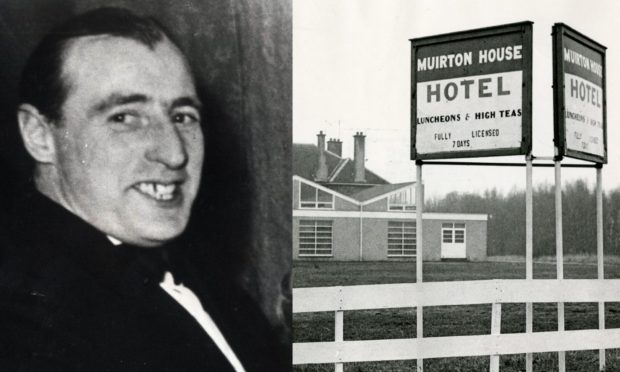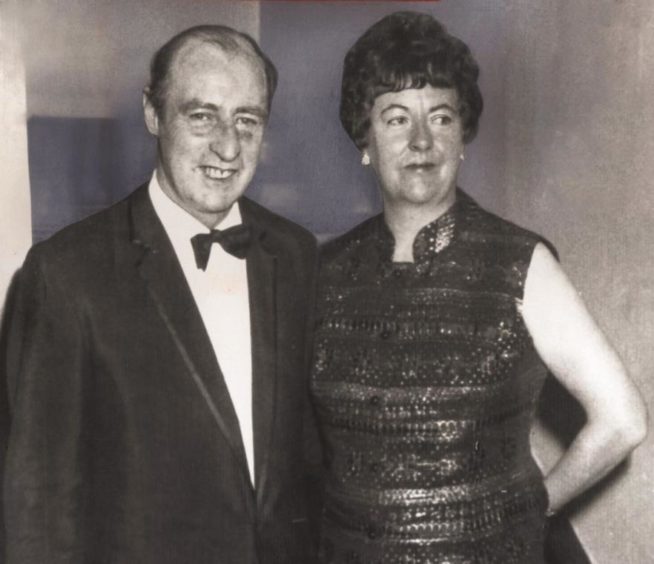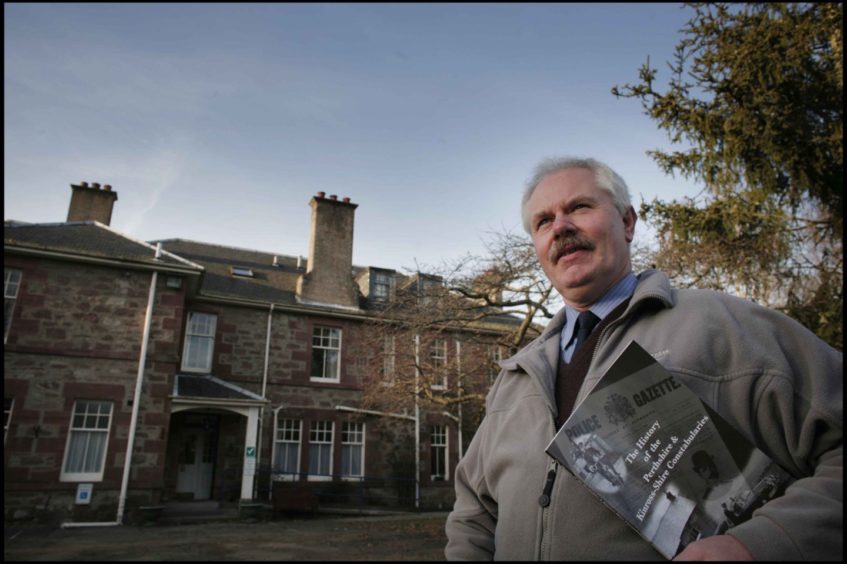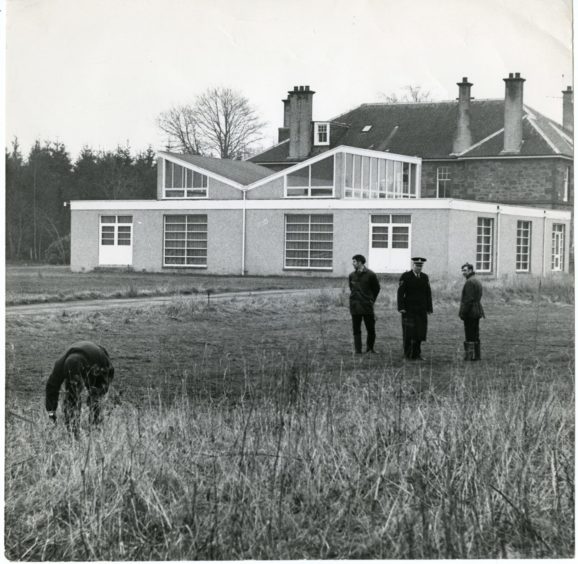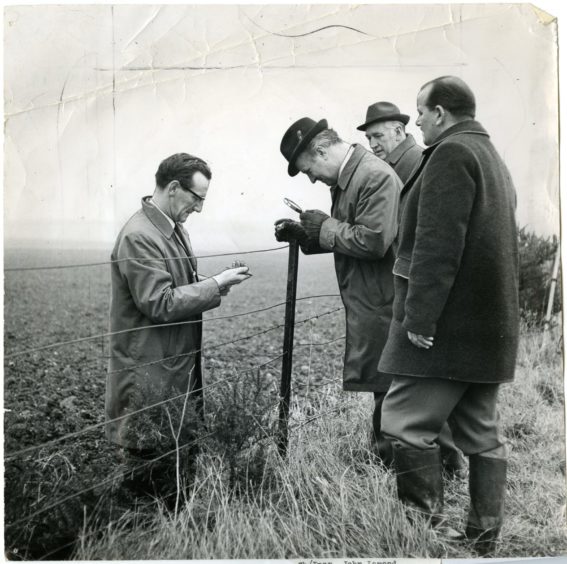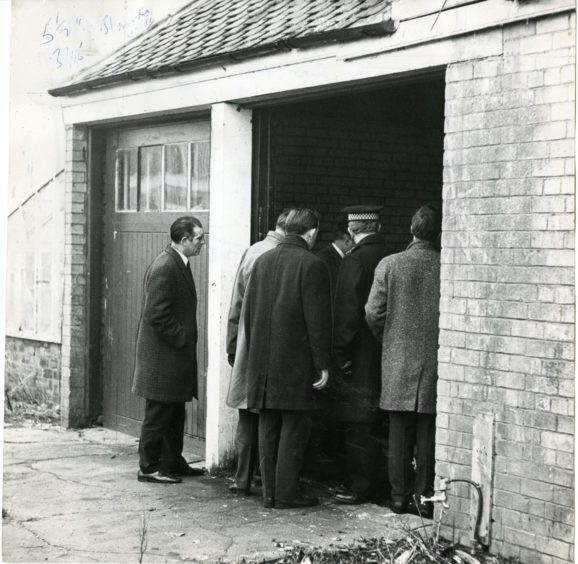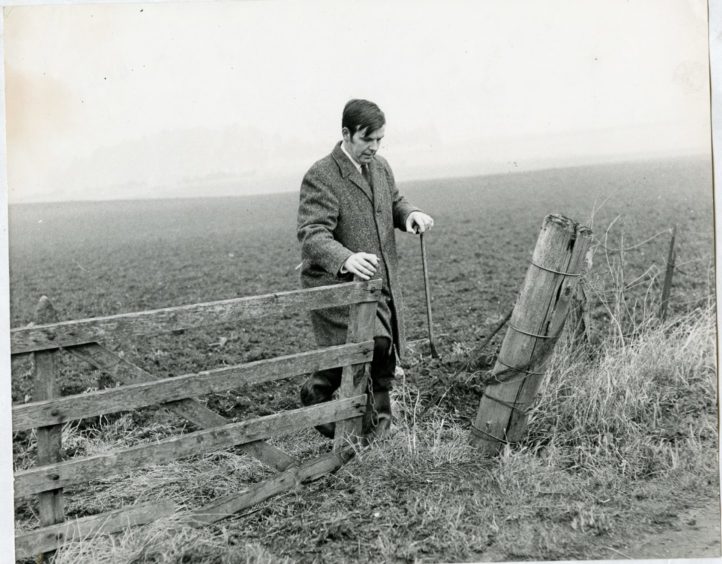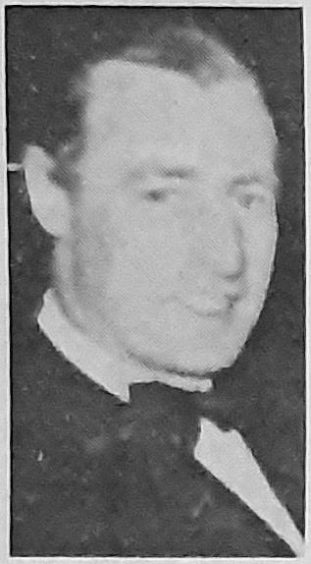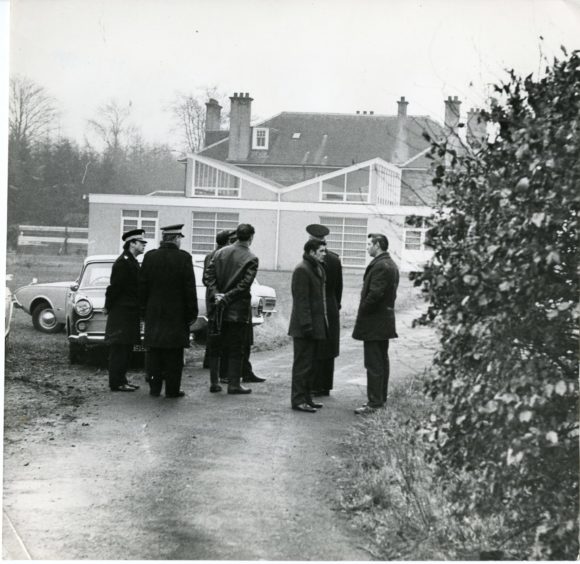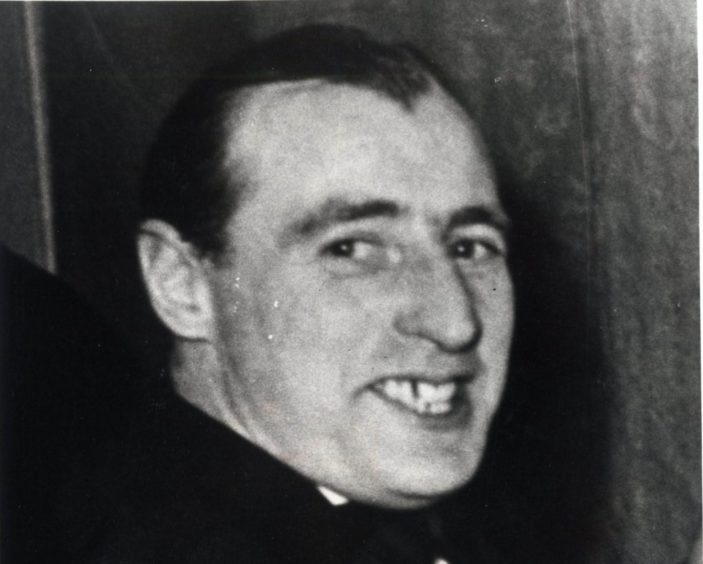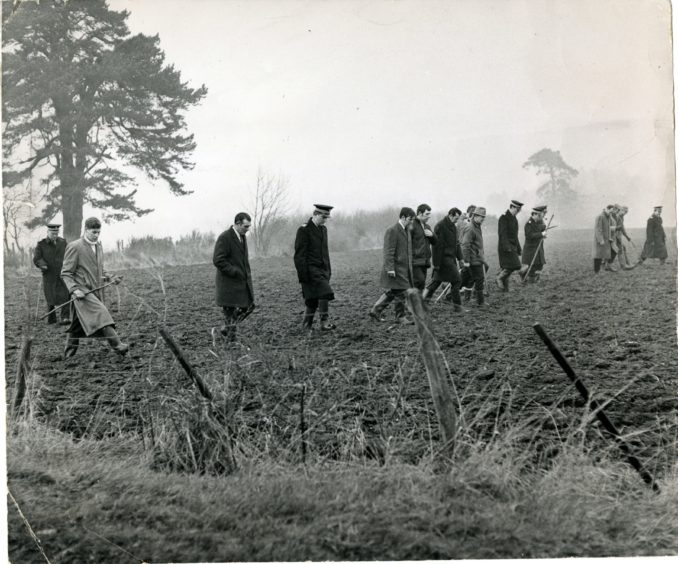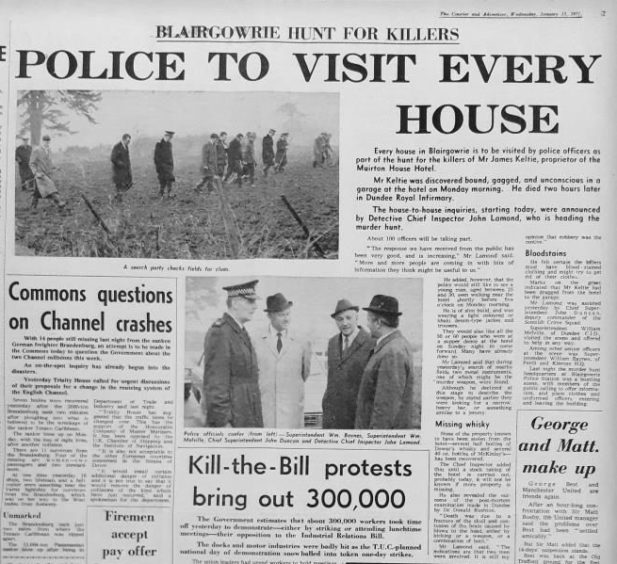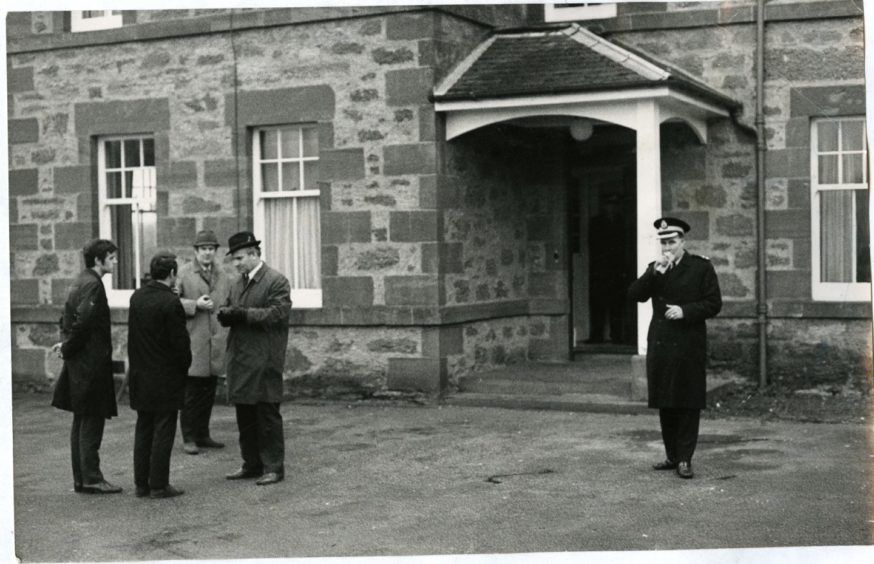Blairgowrie hotel boss James Keltie was found partially clothed, bound, gagged and beaten on January 11 1971. A retired Perthshire police officer tells Gayle Ritchie how the unsolved murder still haunts him.
A former cop believes only a deathbed confession can solve a murder which shocked a Perthshire town 50 years ago.
Retired police sergeant Willie MacFarlane has spent half a century being haunted by the unsolved slaying of Blairgowrie hotel boss James Keltie.
James, 52, was bound, gagged and brutally beaten at the town’s Muirton House Hotel, now a nursing home.
The dad-of-three was found lying in a garage in the hotel grounds – covered in blood and dressed in his underwear – by a taxi driver.
It appeared the hotelier had been attacked in an upstairs bedroom before being dragged 80 yards outside to where he was found.
Incredibly, he was still alive, but he died on his way to hospital.
Despite a nationwide hunt, the killer was never found.
After a lifetime spent solving crime, the Keltie murder is the one case that keeps Willie, who retired from the Force in 2004, awake at night.
As January 11 marks the 50th anniversary of the brutal killing in 1971, Willie wants the spotlight to once again be cast on the horrific crime.
“Someone out there knows what happened to Mr Keltie,” he says.
“This is one of the area’s biggest murder cases and yet the killer, or killers, have never been found.”
Although the murder took place three years before Willie joined Perth and Kinross Constabulary in January 1974, the case was hot on everyone’s lips for decades and there was great optimism it would be solved.
“All murder cases are open until they are solved,” says Willie.
“I’m glad the case hasn’t been forgotten as it has never received the same attention as the notorious Templeton Woods murders in Dundee or the Mount Stewart murder near Forgandenny.”
Shock discovery
The alarm was raised by taxi driver Dave Turpie who had arrived at 8am to take the Keltie children to school, as he did most days.
“The kids were nowhere to be seen so he wandered around trying to find someone and soon discovered Mr Keltie badly beaten and unconscious,” says Willie.
“He had been bound and gagged and was wearing only a string vest and underpants.”
James was rushed by ambulance to Dundee Royal Infirmary but died on the way.
Doctors later discovered he had suffered a fractured skull which caused massive bleeding to the brain.
He left behind his wife Agnes, a policewoman who worked for Fife Constabulary (and who died later in the 1970s) and his three children, then aged five, nine and 16.
There had been a supper dance in the Silver Butterfly, a large function suite to the rear of the hotel, the previous evening.
Around 50 or 60 people attended but no guests had stayed over.
It’s thought James and Agnes retired to separate bedrooms around midnight – the last time he was seen unharmed.
Someone out there knows what happened to Mr Keltie.”
Willie MacFarlane
Phone lines at the hotel had been cut and police found an unsecured window downstairs in the hotel so it was assumed robbery was the motive, although Willie isn’t convinced.
“No money was taken – only a few bottles of whisky were gone,” he reflects.
Two iron bars, found nearby, were presumed to have been used as weapons during the vicious attack.
Murder Hunt
The killing prompted the largest murder inquiry ever held in Perthshire.
Cops led by the late DCI Jock Lamond and assisted by Perth CID fingerprinted every male over 16 years-old in Blairgowrie.
The net was extended to Alyth, Coupar Angus and Birkhill and more than 2000 sets of fingerprints were taken.
An appeal was put out for a man aged between 26 and 28 wearing a khaki jacket seen walking near the hotel at 4.40am on the morning of the attack.
Nobody came forward and a further request to find the driver of a cream car got no response either.
The murder hunt moved to England but yielded nothing.
Inquiries again proved fruitless when a well-known criminal they suspected turned out to have been in hospital at the time of the murder.
“The murder was talked about for years,” says Willie.
“Had DNA and other forensic methods been available, there might have been answers.”
“Big spender”
A report in the Evening Telegraph following the murder said evidence indicated the crime was a “robbery gone sour” and stated that the killer, or killers, were not local but “professional criminals who had planned well in advance before breaking into the hotel.”
“They may have mingled with the dancers on several occasions, awaiting their chance,” it stated.
The report said Mr Keltie had gained a reputation as a “big spender”, often seen buying drinks for patrons, paying for them with a “large wad of notes”.
“He alone handled the takings from the till and it was this unknown sum of money in his possession that probably attracted the killers,” the report surmised.
Unsolved
While Willie was working as curator at the Tayside Police Museum in Dundee, he wrote a book, The History of the Perthshire and Kinross-shire Constabularies.
Published in 2011, it dedicated a chapter to the unsolved Keltie murder and was branded “Blairgowrie’s most dastardly crime”.
Fifty years on, Willie still has many unanswered questions.
“Why did the taxi driver have to go raking around to find Mr Keltie? Where were the children?
“Was it really a break-in gone wrong? If so, why was Mr Keltie bound and gagged and outside?”
Willie also feels the fact taxi driver Dave Turpie’s name became “synonymous” with the murder for a long time was “very unfair”.
And he struggles to believe the killer was someone local.
“There were a few rogues and rascals but I honestly think if it had been local, it would’ve come out. I don’t think it was anyone living in Blairgowrie.”
Another theory is that the murder was a sick joke gone wrong.
Had someone tried to humiliate the hotel boss, leaving him partially dressed, bound and gagged? Perhaps the plan had never been to kill him?
“Mr Keltie was said to have been a generous man who gave to good causes but I think he was a bit fond of the bottle,” says Willie.
“Under those circumstances, he wasn’t liked at all.
“Was the killer someone he had upset? Were the two iron bars found in the grounds the true murder weapons? I don’t think that was ever established.”
Half a century on, Willie is still appealing for anyone with information to speak out.
“I’m sure someone knows who committed this murder and it would be great if they came forward,” he says.
“But in truth, I don’t think the Keltie murder will be solved unless there’s a deathbed confession. Ultimately, I’d like to see justice for Mr Keltie.”
Policing in the 1970s
Willie believes the culprit would have been caught if today’s DNA technology had been available.
“Back in the early 70s, Blairgowrie Police Station was a very basic affair with logbooks and ledgers – there were no computers – and police were more used to dealing with cases of thieving and drunkenness than murders,” he says.
“It’s fascinating to see how the police service has advanced from where it was 50 years ago.
“Other than the civvy typist machine which the men were not allowed to use, all we had at our disposal was one of those clumsy, old fashioned typing machines.
I don’t think the Keltie murder will be solved unless there’s a deathbed confession.”
Willie MacFarlane
“Even Force HQ at Ardchoille House in Bridgend, Perth, relied solely on paper records and the radio network was patchy to say the least. How things have changed.”
